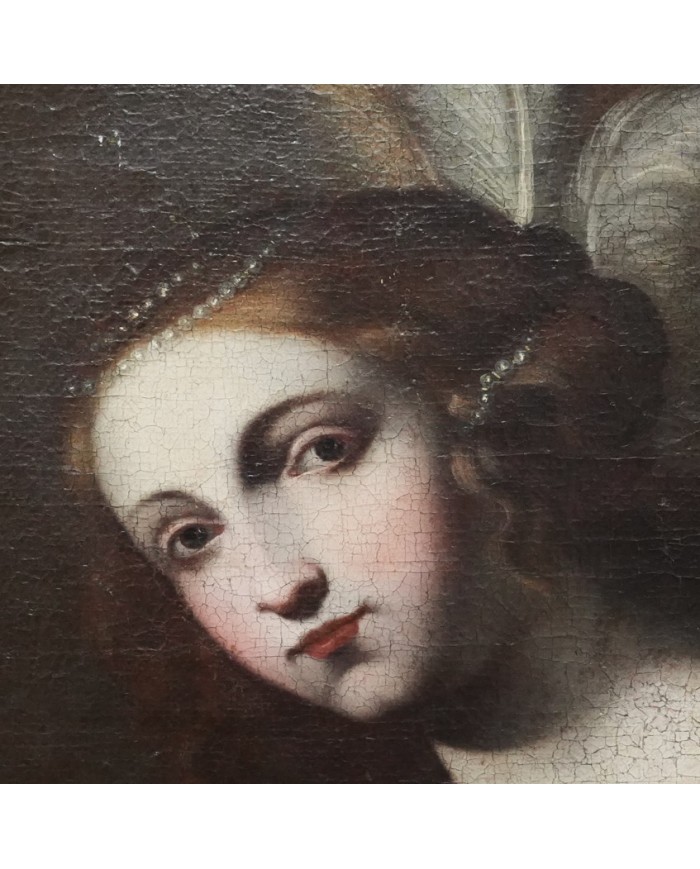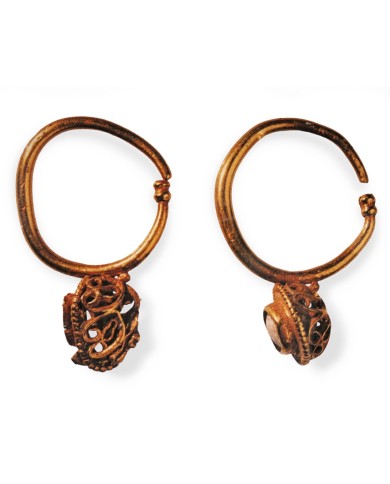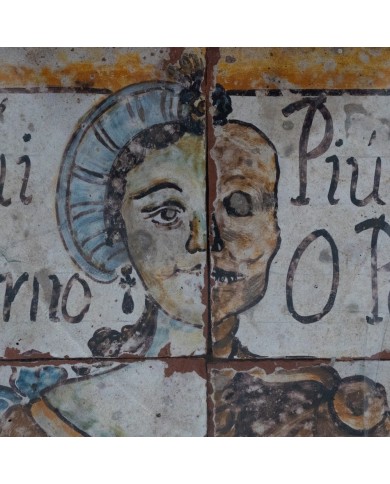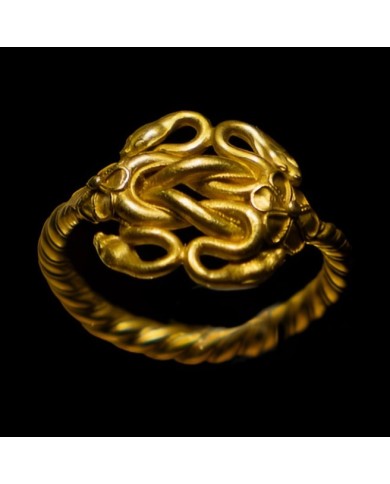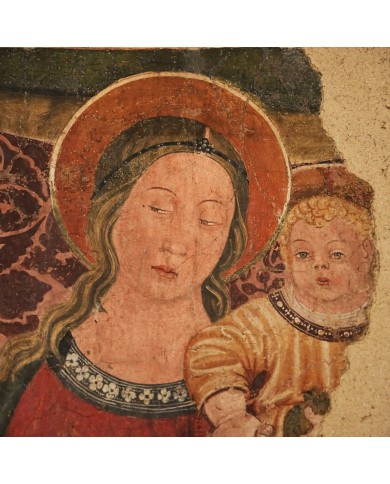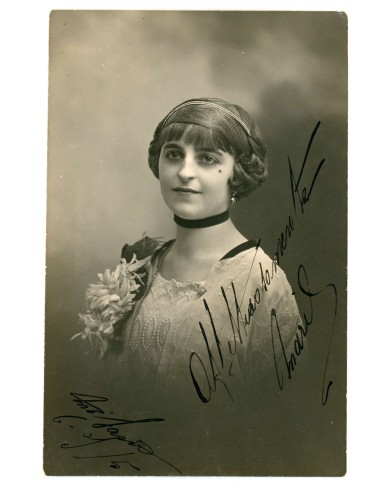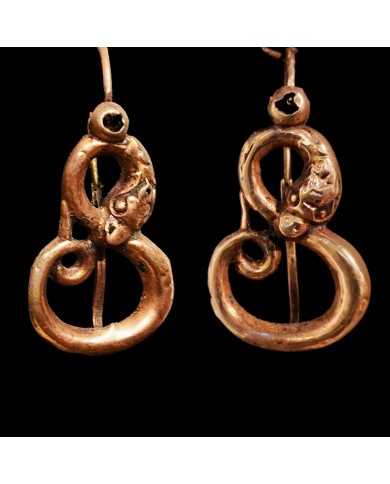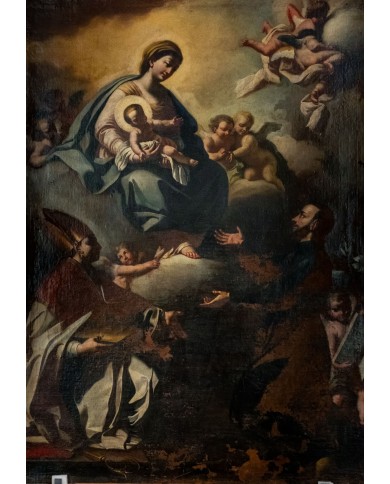The Salome Button
Pollica has ancient origins, whose first inhabited centre was formed in the 8th century and then abandoned due to Saracen invasions. The present town developed around the 10th century, when the Sanseverino, a powerful noble family, donated the territory to the Abbey of Cava de' Tirreni, later becoming a fief of several families, including the Capano family. The castle of Pollica takes its name from the Capano family, originally from Rocca Cilento, who were granted various titles including that of Princes of Pollica, whose property they retained from 1390 - when Mazzeo Capano purchased the fiefs of Pollica, Lustra, Omignano and Sessa from George of Alemania - until 1795, when Giuseppe Capano died without an heir.
FOTO 2 - STEMMA CAPANO
The current architectural layout of the castle is the result of restoration work carried out in 1610 at the behest of Vincenzo Capano, the 15th 'Pullice domine'. Particularly picturesque is the mighty three-storey square tower that dominates the small town. Since 1997, the castle has been purchased by the municipality and is currently home to the 'Centro Internazionale della dieta mediterranea - Angelo Vassallo' (International Centre for the Mediterranean Diet - Angelo Vassallo) and the Regional Observatory for the Mediterranean Diet.
FOTO 3 - CASTELLO CAPANO
In the rooms of the Castle of the Capano Princes, one comes across this painting, an oil on canvas, by an unknown artist, attributable to the second half of the 17th century or the early 17th century, probably from the Neapolitan area: Andrea Vaccaro or the Malinconico family of painters, Andrea or his son Nicola. Two canvases in the church of the convent of San Francesco in Pollica have been attributed to the latter. This work depicts the biblical episode of Salome, daughter of Herodias, with the head of St. John the Baptist, also narrated in the Gospel of Matthew.
"But when Herod's birthday came, the daughter of Herodias was dancing before them, and Herod was pleased with her. So he gave her his word with an oath to let her have whatever she might make request for. And she, at her mother's suggestion, said, Give me here on a plate the head of John the Baptist. And the king was sad; but because of his oaths and because of his guests, he gave the order for it to be given to her; and he sent and had John's head cut off in the prison. And his head was put on a plate and given to the girl; and she took it to her mother.
Matthew 14:6-11
.png)
For this work we will focus on two of Salome's ornaments, the button on her shoulder and the string of pearls on her head.
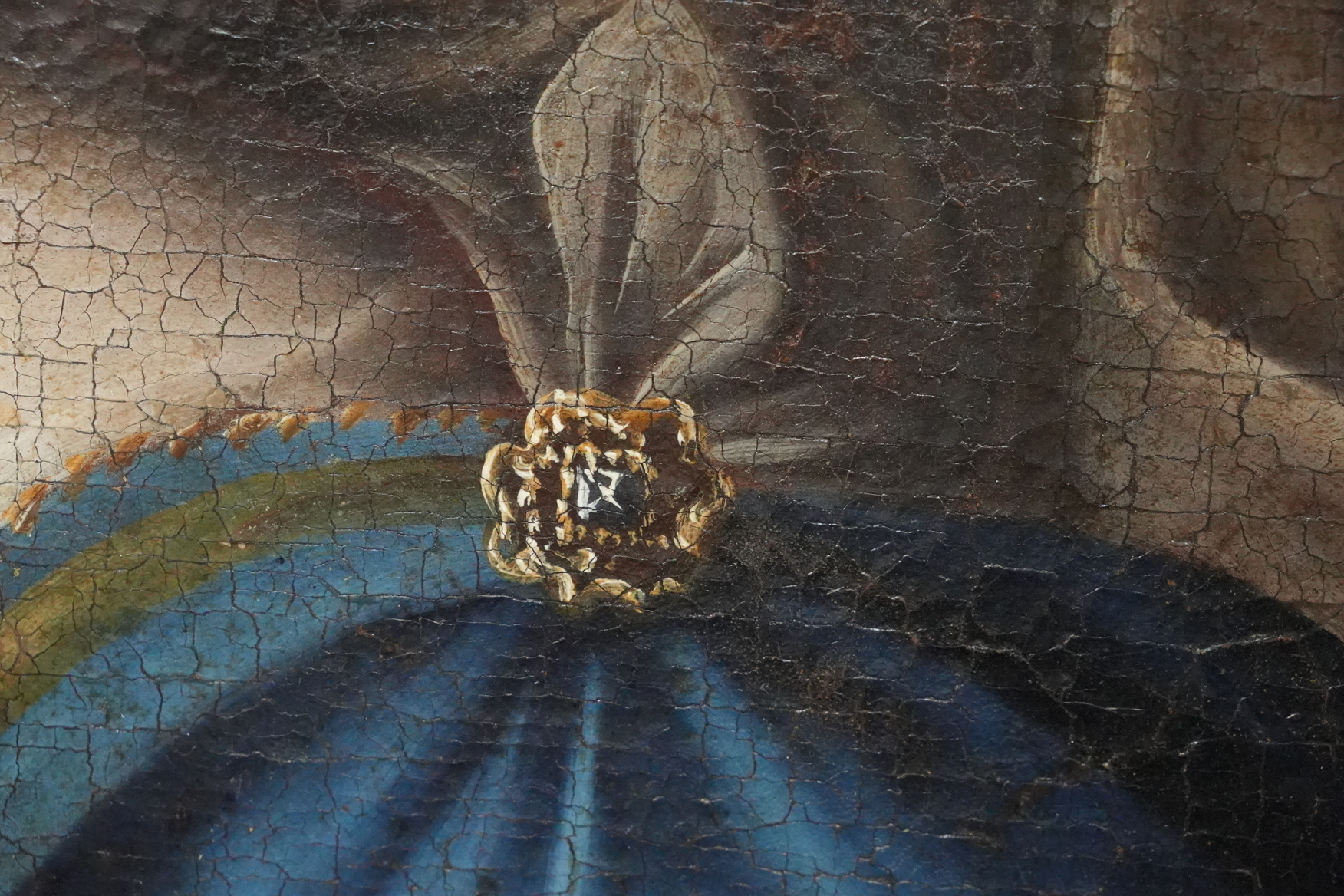
To understand the jewelled button depicted in this painting, let us delve into the history of the button whose name derives from the French bouton meaning bud or bud. The first evidence of buttons can be found in the Indus civilisation, around 2700 BC, where buttons were used as personal ornaments or as symbols of social status. Later, jewelled buttons spread to other cultures, such as Egyptian, Greek, Roman, Chinese and Indian, where they were used to decorate clothing, accessories or sacred objects. In ancient Rome, buttons were used even though laces, fibulae and brooches were used to fasten clothes, robes and cloaks. It was not until the Middle Ages that buttons became increasingly popular, becoming, around the 13th century, a distinctive sign of the nobility and clergy, who wore them to show their power and wealth and were made by goldsmiths who decorated them with geometric, floral or animal motifs.
Jewelled buttons were also associated with symbolic or religious meanings, such as protection, fertility or salvation. In the Renaissance and Baroque, the period in which an anonymous painter portrayed our Salome kept in the Castle of the Princes Capano of Pollica, the button was reaching its artistic and stylistic zenith, thanks to the influence of classical culture and the arrival of large quantities of gold and precious metals from the Americas, becoming more and more an expression of wealth. Jewelled buttons were used to embellish the clothes of sovereigns, nobles and powerful people who sported them on public or private occasions. The Sun King himself was a great fan of jewelled buttons. Jewelled buttons were also an expression of taste and creativity, reflecting the fashions and trends of the time. And from these centuries are the perfume buttons, buttons with enamel-painted images or represented with micromosaic or engraved cameos or, again, porcelain buttons.
A period of great pomp, wealth and creativity. In the second half of the 18th century and in the 19th century, jewelled buttons underwent a crisis due to political and social revolutions that changed customs and fashion. Jewelled buttons became less conspicuous and more sober, in line with the neoclassical and romantic style, and in the nineteenth century, like so many products, their industrial production also began. In the 20th century and the year 2000, jewelled buttons made a comeback thanks to the renewal of art and fashion. Jewelled buttons were reinterpreted in a modern and contemporary way by designers such as Coco Chanel, Christian Dior, Yves Saint Laurent and Gucci, who turned them into stylish and personalising elements. Jewelled buttons have also been chosen and taken up in current events by stars such as Madonna, Lady Gaga and Beyoncé, who have made them part of their unique and unmistakable look.
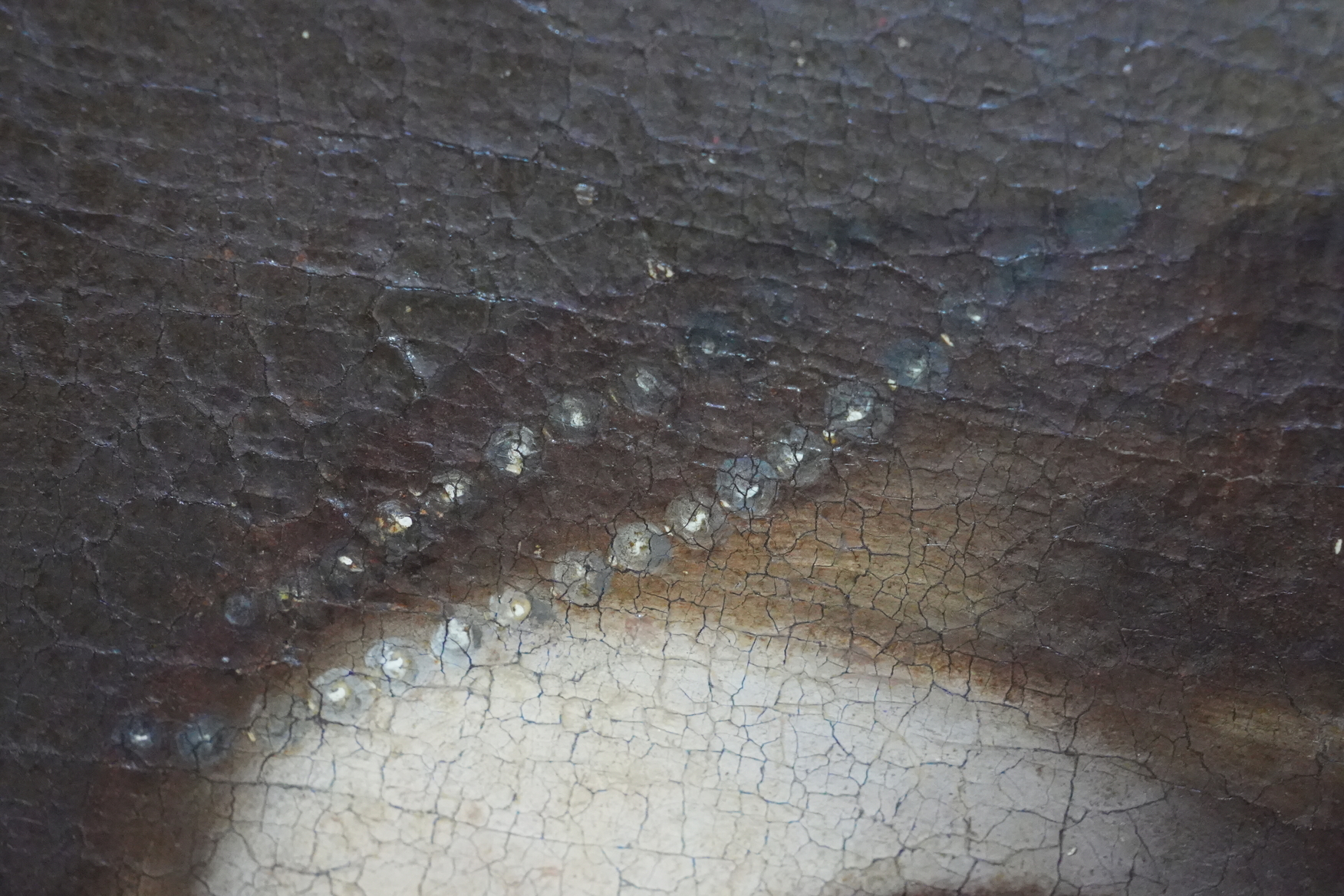
The young Salome, unlike married women who had to wear their hair up as a sign of modesty and respect, as a young maiden is presented with her head uncovered, her hair loose and falling over her shoulders. This is a symbol of ostentatious and brazen feminine beauty, sometimes even considered diabolical. Already in the last centuries of the Middle Ages, hairstyles had become more complex and made richer through accessories, such as feathers and embroidery or veils and ribbons, and jewellery, such as pearls and precious stones, clasps and gold jewellery: the head became an emblem of one's rank and jewellery, of course, was a fundamental part of the construction of one's idea and self-image. During the Renaissance everything became simpler and more sober, before reviving with the Baroque. Our Salome reflects the simplified canons of a Renaissance woman, although the painting may date to a later period.
We find in fact a simplified taste with respect to the complexity of the Middle Ages first and the Baroque later, with that accessory widespread throughout Italy and of Tuscan origin that was the 'frenello', i.e. one or more strands of pearls that could be woven around the twists of the veil, the real or fake hair, left to fall simply on the head, or worn around the circumference of the head. We do not know whether Salome's hairstyle was dishevelled as a result of the intense and persuasive dance directed at King Herod, perhaps choosing for the heat the hair gathered in a chignon behind the nape of the neck, from which light feathers can be glimpsed, another typical ornamental element of the hairstyles that found great affirmation with the Renaissance.
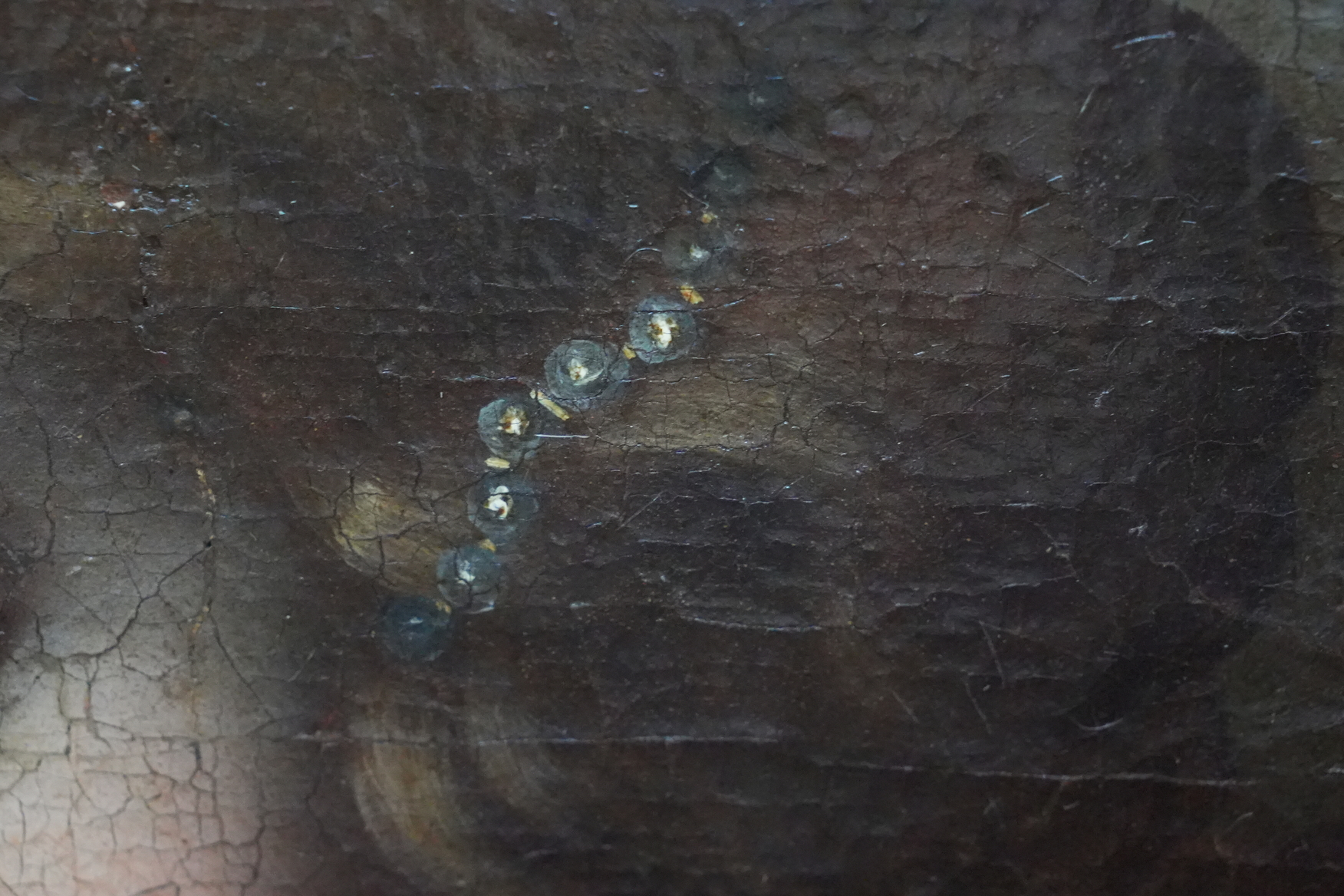
Pietro Ebner, Storia di un Feudo del Mezzogiorno. La Baronia di Novi, Edizioni di Storia e Letteratura, 1973
Pietro Ebner, Economia e Società nel Cilento medievale, Edizioni di Storia e Letteratura
Leda Siliprandi Partesotti, Il bottone racconta, Wigwan Editore, 2017
http://www.nobili-napoletani.it/Capano.htm
https://vestioevo.com/2015/04/26/corone-perle-e-nastri-tra-i-capelli/
The Castle is located in Pollica, Via Matteo Mazziotti
✉ castello@pollica2050.org
☎ +39 3336417696
SUMMER VISITING HOURS
June and September
Weekend Sat-Sun 10:00-12:00 and 18:00-20:00
July and August
Mon- Sun 10:00/12:00 and 19:00-21:00
https://castellocapano.org/it

